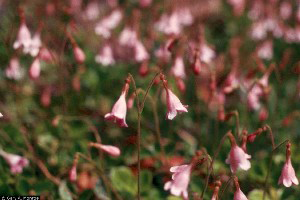Twinflower was Linnaeus' favorite plant, and was renamed from Campanula serpyllifolia in his honor.
Photo Credit: © Gary A. Monroe, USDA-NRCS PLANTS Database.
Linnaea borealis
Common Name: twinflower
Other Common Names: American twinflower, northern twinflower
Plant Functional Group: Evergreen forb
Class > Order > Family: Magnoliopsida > Dipsacales > Linnaeaceae
